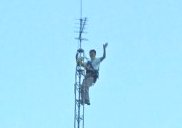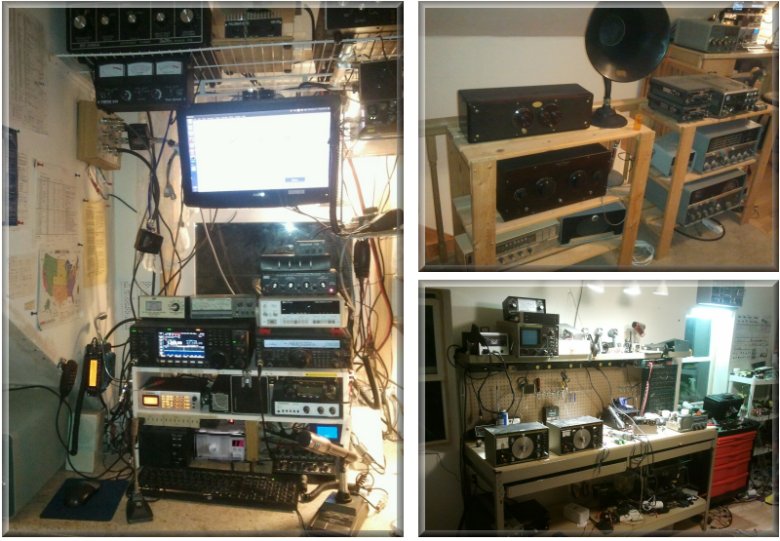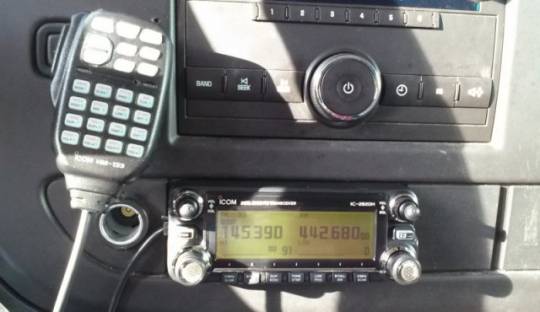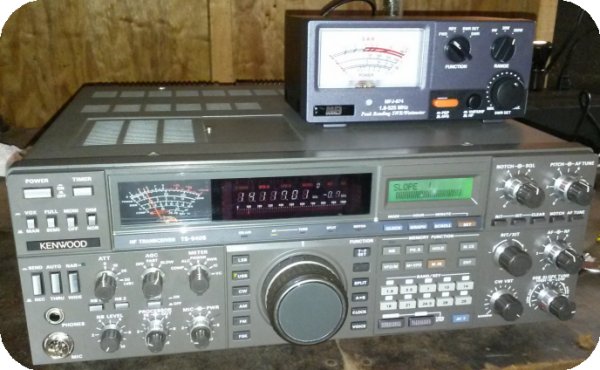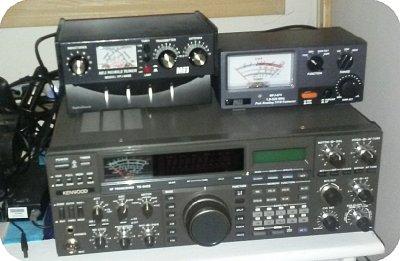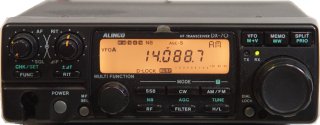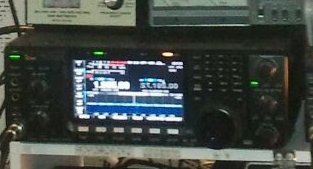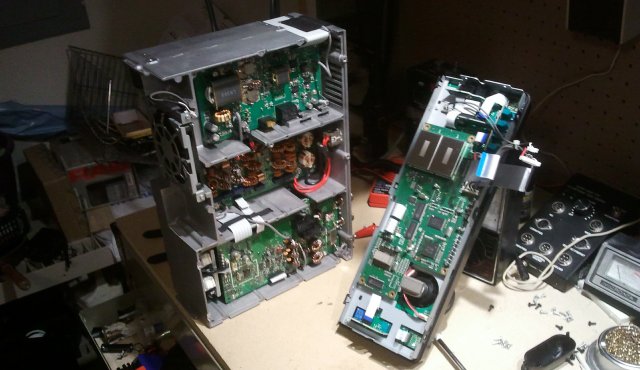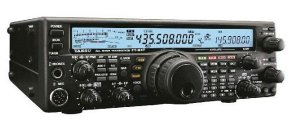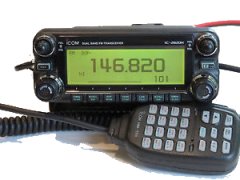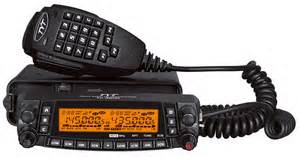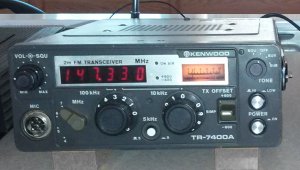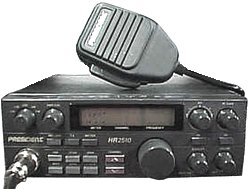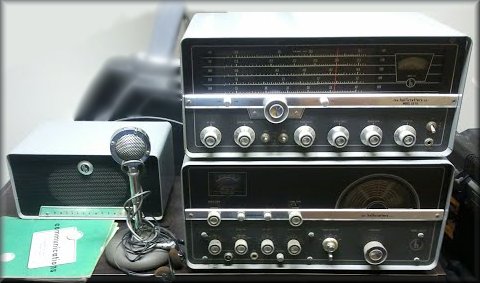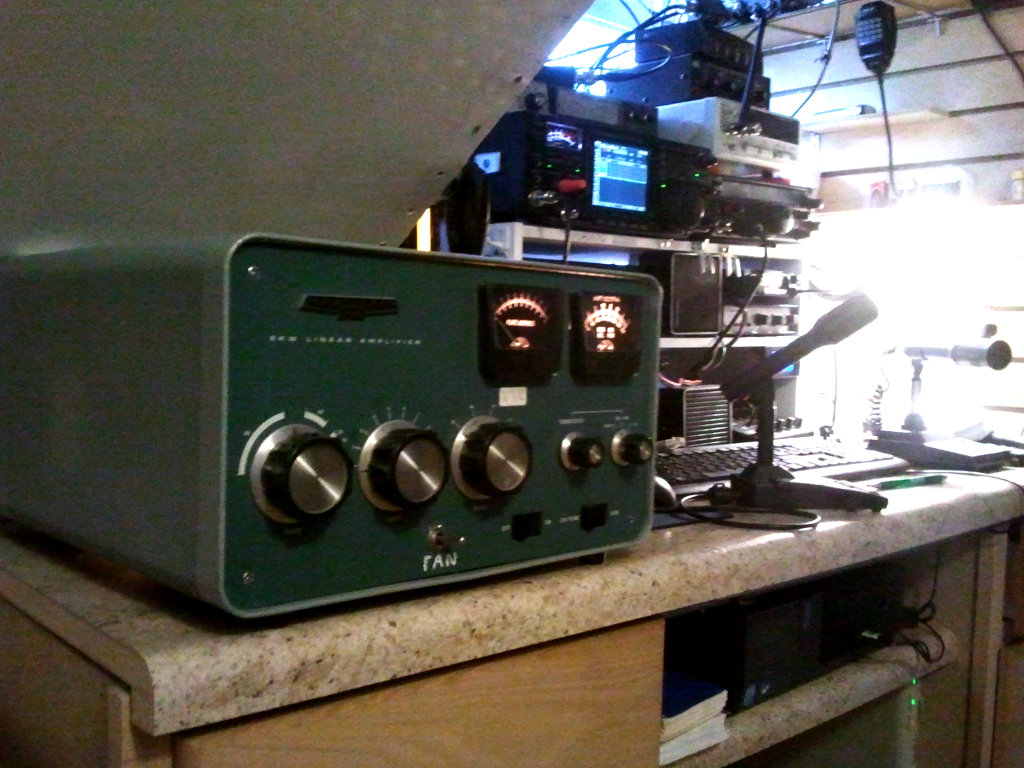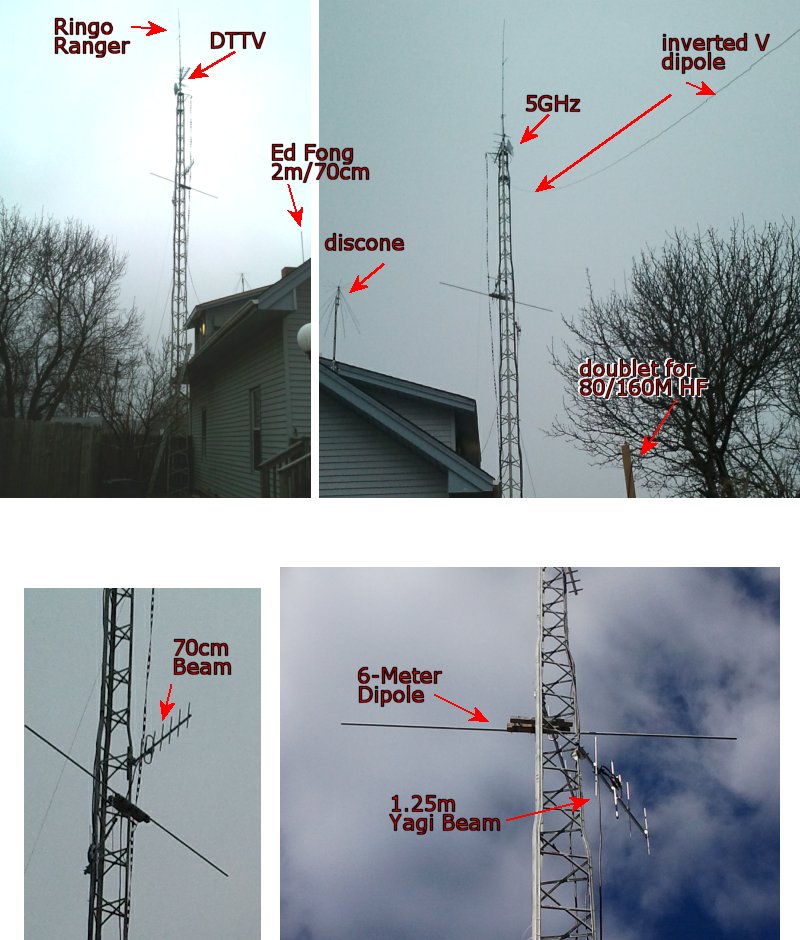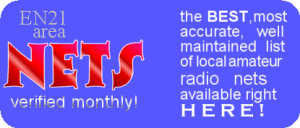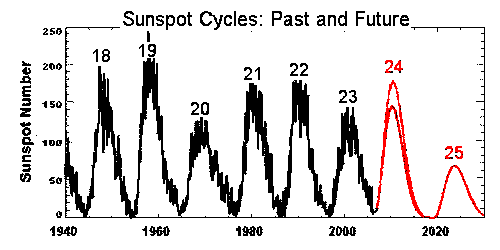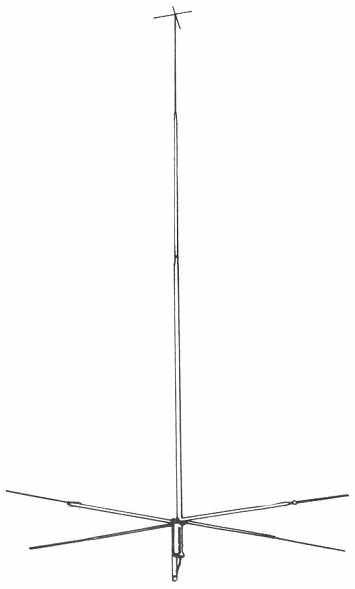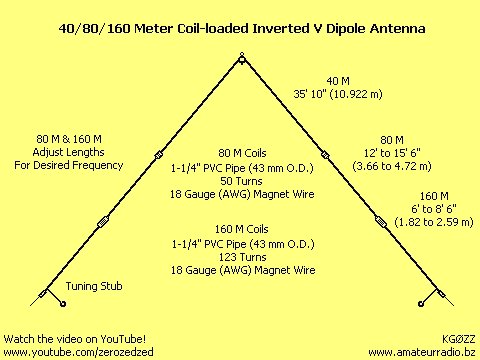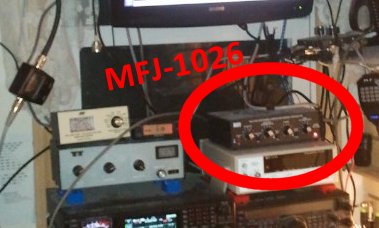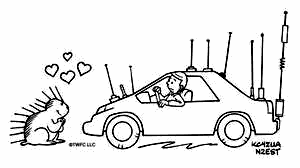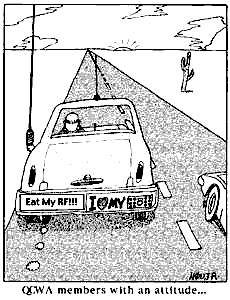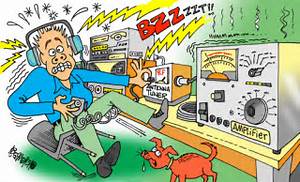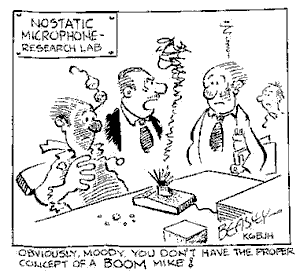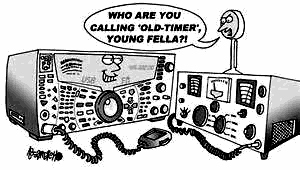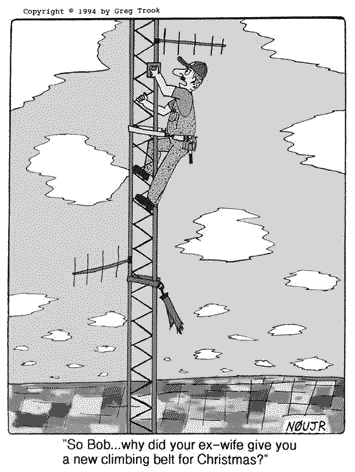User:W0DBW
WØDBW - Christian Amateur Radio Operator
Derek Winterstien / Nebraska
EN21BA33
Contents
- 1 About Me
- 2 Recent Equipment Photographs
- 3 Transceivers
- 3.1 Kenwood TS-940SAT
- 3.2 Alinco DX-70T
- 3.3 Icom IC-7600
- 3.4 Yaesu FT-847
- 3.5 Yaesu FT-817
- 3.6 Icom IC-2820H
- 3.7 TYT TH-9800
- 3.8 Kenwood TR-7400A
- 3.9 QYT KT-8900
- 3.10 Kenwood TK 880H
- 3.11 Clear Channel Ranger AR-3500
- 3.12 Uniden President HR2510
- 3.13 Yaesu Sommerkamp FT-7B
- 3.14 Tytera MD-380
- 3.15 Vintage Hallicrafters Station Complete
- 3.16 Can You Hear Me Now?
- 4 Antenna Systems
- 5 Some Local Nets
- 6 SPACER CATEGORY
- 7 unknown nets
- 8 Local Repeaters
- 9 extended range repeaters
- 10 Opinion Section
- 11 For Sale
- 12 Sun Spots
- 13 Skip
- 14 Hy Gain Penetrator
- 15 CW
- 16 Investigating
- 16.1 The 40/80/160 Meter Coil-loaded Inverted V Dipole Antenna
- 16.2 Backpack Transceivers
- 16.3 Cushcraft ARX450B Ringo Ranger II
- 16.4 Downeast Microwave DEM 222-28CK
- 16.5 Icom IC-9100
- 16.6 NOISE CANCEL/SIGNAL ENHANCER - Comparator
- 16.7 Equipment: Connect Systems CS750 DMR Digital/Analog Radio
- 16.8 Equipment: Yaesu VX-3R VHF/UHF DualBand Handheld -vs- ZASTONE ZT-2R+
- 16.9 Icom ICR6 Broadband Receiver
- 16.10 Yaesu FT-736R
- 16.11 misco
- 17 Scanning the LW, MW, and SW dial
- 18 Wavelength to Frequency Table
- 19 mobile antennas
- 20 HUMOR SECTION: HAVE A GOOD LAUGH
- 21 club discussion
- 22 OMMRS
- 23 Local Amateur Web Sites
- 24 Amateur Radio Related
- 25 Note to Visitors
About Me
Renewed my interest in radio after over two decades in absentia, I worked my first DX contact in 1988. I currently hold a General class license and will pursue obtaining the Extra as time permits, which I plan to achieve eventually. I have been working with Part 90 radios as part of my business for several years, which was another motivating factor in my decision to go "full ham."
In the early 2000s I was involved in the first implementation of wireless Internet in the City of Lincoln Nebraska, which later created a job opportunity as a wireless engineer for an Internet company called Microlnk. Although I ran the data center, I did spend time in the field and venture up the occasional tower.
I still climb towers when necessary!
In 1992 I earned a technical degree at a trade school in Iowa, and although that was in electronics, I made a career as a computer programmer. It has been more recently that I have become interested in electronics once again, and thus established a service center in my home where I restore antique radios as well as other electronic related interests. There's things I know how to do well, and there's plenty I am still learning. I think back to when I was in high school in the 80's working on CB radios for extra money and my part time job at Radio Shack -- it feels to me like my hobby has come full circle because today I am back at it again.
Recent Equipment Photographs
Since I am allocated limited space in my home for amateur radio, I have to use it to the fullest. One way to accomplish this is to utilize vertical space. My area is packed from floor to ceiling so that I can fit in as much as possible in order to accomplish my radio goals. My next home should offer more space, but for now I make do with what I have. The third picture is my service bench in the basement. It is a work in progress.
The Icom in my van is a mobile transceiver that I am impressed with. For the most part I tend to favor the Icom radios over the other manufacturer radios in both mobile application as well as in the shack. Yaesu has a number of annoyances that has inclined me away from the products over time. Kenwood systems have an impressively rich sound, however, they seem to be trailing in innovation just now and their price-point is not consistent with available features. Vintage Kenwood is of more interest to me as opposed to contemporary Kenwood.
Transceivers
Transceivers I have collected and used over the years are listed here. I am trying to locate the ones I stored away. Since I have renewed my interest in radio communication after many years (late 80s early 90s) I have started buying here and there again.
Presenting some of my transceivers...
Kenwood TS-940SAT
Kenwood TS-940SAT - A Solid State Competition Grade HF Transceiver. Solid state HF transceiver, radio bands from 160 to 10 meters, general coverage receiver from 150 kHz to 30 MHz, CW, SSB, AM, FSK, and narrow-band FM. 100 Watt out. The S model has no auto tuner, while my SAT has the auto tuner.
This radio was the KING OF HF back in the 1980s and 1990s! It is certainly the KING OF HEAVY. I think it weights around 50-lbs. I can "hear" HF contacts with this radio that I cannot with any of my other HF rigs; it has very sensitive ears.
The auto-tuner does things people won't believe. In a pinch I connected 300 ohm flat to a PL-259 without a balun and directly into the TS-940, on a random length asymmetrical doublet. Not only did the auto-tuner match it to the radio, I could work an 80-meter contact! Warning: do not connect an antenna this way. Like I said, it was "in a pinch," and this is not my working antenna.
The nice thing about this radio is "no menus." Everything is controlled by manual controls on the face. It needed some attention when it came to me. I have corrected some problems with it including the well known PLL lock problem, the sub display not working, and a problem with the auto tuner. I think it is ready for use.
TIP: If you own one of these I recommend connecting both fans in the rear directly to DC power from the contact ahead of the AVR board so that the fans come on and run full time when the radio is on. The temperature sensors that are supposed to turn the fan protecting the finals on is not reliable. I replaced the original fans both with quiet running PC fans and they run whenever the radio is powerd on.
Alinco DX-70T
- Alinco DX-70T HF/6m Tranceiver - Working. This transceiver will cover 160 meters - 10 meters and 6 meters. SSB, CW, FM 1.8MHz-30MHz 100 Watts; 50MHz-54MHz: 10 Watts (AM) 1.8 MHz - 30 MHz 40 Watts; 5OMHz - 54 MHz: 4 Watts.
Icom IC-7600
- Icom IC-7600 160 to 6 meter.
My current primary HF rig. I use this with the Signalink for digital modes.
Icom's are less of a pain to service.
Yaesu FT-847
- Yaesu FT-847 HF, VHF, UHF All Mode Transceiver. Those marketing people at Yaesu call it The Yaesu FT-847 Earth Station. Here's a stock photo:
I need a DTMF microphone for it. When i got this radio it needed some small fixes. It is a pretty good radio although it lacks some features that will ultimately cause me to replace it with something more capable. I wish it had a true cross-band repeat. It will only cross-band retransmit. Furthermore, it does not have a built in SWR meter or reverse power meter. It only has a "high SWR indicator." It needs more memory channels too.
This radio has excellent digital signal processing built in. Also, it has a built in RF Amp for receive amplification which also works very well. I use a combination of the DSP and notch filter when i work HF so I can hear weak contacts.
Yaesu FT-817
Haven't had it long, but will get some write'ins up here about it soon enough!
Icom IC-2820H
This is my absolute best 2m/440 mobile transceiver! Icom makes quality radios.
- Icom IC-2820H with UT123 board. This is a dual band 2m / 70cm transceiver with optional D-Star digital mode. Mine has the D-Star board installed. I haven't had this radio very long. I will post some pics and a review after I have put some time in on it. There is the Nebraska D-Star Club, and the D-Star Repeater and User Directory. You can register your callsign for use on D-Star.
TYT TH-9800
- TYT TH-9800 Quad Band Transceiver. This radio does cover 10-meter but not with SSB so I didn't list it up there. It is strictly AM-FM mode. It is a Chinese knockoff of Yaseau. I got it for under $200 new. looks like:
The above is a stock image. I will snap a pic of it as it is hooked up in my Jeep. It was in my service van, however, I moved it to the Jeep recently. It is on an Opek Quad band antenna.
Kenwood TR-7400A
- Kenwood TR-7400A - My old VHF mobile rig. I dug this out of storage but can't find where I put the microphone.
Actual pic: I hooked this up to a VHF HT antenna and a 12v PSU to see if it still worked. Even if I had the mic I wouldn't key down on this type of antenna. I was picking up conversation from a couple local repeaters. Sounded good. When I find the mic I will hook it up in my van and see if it still transmits well enough.
I've managed to pick up another three units, so I guess I have a collection of them now. Listen when I talk on one, they sound good!
QYT KT-8900
- QYT KT-8900 dual band 20W MINI Moblie radio. This is a noisy little rig that I put in the wife's car. I wouldn't recommend this radio to anyone.
Kenwood TK 880H
Kenwood TK 880H - This is a Part 90 radio which retails with the following feature list: 32 systems / 250 groups (trunked mode), Max 600 channels (trunked mode), Max 250 channels capacity (conventional mode), 12 character dot matririx LCD, 10 character alphanumeric alias. This radio can be programmed for use on Ham bands. Programming is done with KPG-49D software. It is supposed to be 50 watts and programmable for use between 400 to 430 mhz. With a dummy load I tested it at about 30 watts. Requires a serial cable to program, serial on one end, RJ45 on the other.
Clear Channel Ranger AR-3500
- Clear Channel Ranger AR-3500 - In storage. Hand-me-down from a family member. I like my President HR2510 better although this AR3500 is the 100 watt model so it is more powerful. It does have power! This radio is in unknown condition. I haven't powered it up in over 20 years.
Uniden President HR2510
- Uniden President HR2510 - Working however since it hasn't been used much in a couple decades I think it is a bit out of tune. The SWR meter on it never seemed to work well. I used to thump the signal display to get it to register. I have worked this radio a lot and made many contacts. In 1990 I was able to make regular contacts in the UK. Used with the Hy Gain Penetrator antenna, which has to be shorted a bit for 10-meter operation, and during the right solar activity, this radio is great for making long distant contacts on HF band. Here is what it looks like:
When I get this back on a good antenna I plan to make some contacts before this sunspot cycle dries up.
Yaesu Sommerkamp FT-7B
- Yaesu Sommerkamp FT-7B - This was also a hand-me-down from a family member. It once worked, but now doesn't seem to put out any power, low output problem. I plan to take it apart and start with a good cleaning, then go from there.
Tytera MD-380
MotoTRBO / DMR
I have been testing the water on DMR with the Tytera MD-380 which is MotoTRBO compatible. DMR is Digital 2-Way Radio. If you're interested in DMR take a look at Using DMR which is a guide to get you started.
Vintage Hallicrafters Station Complete
Complete Station Matched Set: Hallicrafters HT-39 Transmitter, HT-111 Receiver, R-48 Speaker, and Microphone.
- Hallicrafters Model SX-111 Multiband Receiver
Ham band only receiver covering the 10m, 15m, 20m, 40, and 80m bands plus 10 MHz WWV.
IF frequencies of 50.75 kHz and 1.65 MHz. Variable selectivity from 500 Hz to 5 kHz, notch filter, ANL, BFO with product detector, 100 kHz calibrator and S-meter.
Tubes used: 5Y3 rectifier, OA2 voltage regulator, 6AQ5 audio output, 12AX7 audio amp. & BFO, 6BJ7 AGC, detector & ANL, 6BY6 product detector, 6BA6 2nd. mixer, 12AT7 2nd. conversion oscillator, two 6DC6 as 2nd. & 1st. IF, 6BY6 mixer, 6C4 1st. conversion oscillator, 6DC6 RF amplifier and 6AU6 crystal calibrator.
- Hallicrafters Model HT-37 Amateur Transmitter
Production of this unit began in 1960. Hallicrafters HT-37 amateur transmitter covers 80, 40, 20, 15 and 10 meters in AM(DSB), CW and SSB modes. Power is 70-100 watts input SSB PEP/CW.
The finals are a pair of 6146 tubes.
This radio features a built in power supply and operates from 120 VAC. 18.25 x 9.5 x 16.75 inches 80 lbs
The VFO employs double reduction disc drive, fixed T.C. Sideband suppression is 40 db at 1000 CPS. Power rating is 70-100 watts P.E.P. output CW or SSB. 17-25 watts carrier on AM phone. There are two 6146s in the final. 3rd and 5th order distortion products down 30 db. Carrier suppression is 40 db or better. CAL system has instant CW CAL signal from any transmission mode. Cooling is by convection with final operated at low dissipation in standby.
The Hallicrafters HT-37 is the matching unit for the Hallicrafters SX-111 receiver and the Hallicrafters R-48 speaker.
- Hallicrafters Model R-48 Speaker
Can You Hear Me Now?
Antenna Systems
Tower and Antenna Configuration
I have a Rohn BX40 tower. I would like to eventually go higher. Right now, the BX40 will have to suffice.
It is a free standing tower anchored to a concrete slab. The depth of the slab is below the frost line. Two of the 3 tower legs are grounded to 8ft 1/2" buried copper pipe. (see antenna descriptions below picture)
- Ringo Ranger: this is a 2m omnidirectional monoband antenna. Base starts at 45ft.
- Ed Fong: Dr. Ed Fong's (WB6IQN) design, Edison Fong DB-1 Antenna. I built this following his design specification
- discone: This generic discone I picked up at a hamfest and use with the scanner and SDR receiver
- 5GHz: network link between properties
- DTTV: UHF digital terrestrial television
- inverted V dipole: HF wire dipole fed by 450-Ohm balanced line for 20-80 meter HF
- doublet for 80/160M HF: 120ft doublet fed by 300-Ohm balanced line for 80-160 meter HF
- 70cm beam: 6 element yagi, N connector, used primarily for DMR/MotoTRBO
- 6-Meter Dipole: built out of steel conduit, use with 4:1 balun
- 1.25m Yagi Beam: Cushcraft A224WB 220 MHZ pointed towards the WB0YLA 224.76 repeater in Omaha
also mounted on or near the house:
- 70cm ground plane: general 440 operation
- 2m ground plane: experimental
- Comtelco BS450XL3: UHF 2-way
- 10-meter convertible wire dipole: disassembled, was on the Chimney.
10-meter convertible wire dipole
- homebrew
This is a wire antenna I built. There is a 1:1 balun to which LMR-400 is attached and goes into the shack. The antenna is nearly an inverted V, however, I say it is less inverted than a traditional inverted V. A true inverted V tends to be omni directional. Now the truth of that has relevance to proximity to the ground (must be less than 1/4 wavelength) and band. 10-meter is high enough in frequency you do not want to treat it like you would one of the lower HF bands.
The 10-meter dipole I am using has about a 30 degree angle downward. The length of each side is 94" giving a total dipole length of 15' 8" long. At this length the antenna is resonate on the SSB voice portion of the 10-meter band towards the bottom. Although it is perfectly resonate, I still use the auto-tuning function on my HF radio to protect the finals. According to a hamuniverse article a dipole at 10-meter should be about 16½' long. Mine is shorter, however, the antenna analyzer allowed me to accurately trim it down to resonance and it is a match straight to the transceiver.
Each end of the antenna has a connector so that I may attach extra length to the antenna. I can, for example, attach sufficient length bringing the total dipole length to around 32' - 33' so that I may work 10m - 20m matching ham bands in-between with the tuner. Of course, the more inductor loading required, the less efficient the antenna is. However, on 20m the antenna is again resonate without the tuner.
- Attach
154"107" of additional length to each side of the 10-meter dipole for the 20-meter band.
188" total length on my 10-meter (15' 8")
94" per side
7' 10" per side
402" total length on a 20-meter inverted-V (33' 6")
201" per side
16' 9" per side
201 - 94 = 107" of additional length needed for conversion to 20m
8' 11"
756" total length on a 40-meter inverted-V (63')
378" per side
31' 5" per side
378 - 94 = 284" of additional length needed for conversion to 40m
23' 8"
To 80-meter a lot more length is required. This begins to be a challenge on my urban located property lot. I can build long HF antennas that run North - South. I have a long narrow lot. However, the 10-meter convertible dipole on my roof runs East - West. If my neighbor is not home I can go the extra length to work 80-meter on this antenna. I would not try to use this particular antenna for the 80-meter band.
Notes on Length: On my 40-meter tests using the lengths in the table above 1:1 resonance was right at 7.0 MHz. I shall shorten the antenna and try to match 1:1 at 7.2 MHz.
6-Meter Steel Dipole
- homebrew
I used ½" steel conduit for the poles instead of copper since the steel is more rigid and holds shape better as well as endures the elements better. The first version of this antenna I have used to work the local 6-meter net.
Some Local Nets
These nets I have either monitored, to verify, or checked in.
- Current as of: April 2019 (we need more current information to improve this page...)
- VHF Nets local to SW Iowa, SE Nebraska
- HF Nets based out of the tri-state area
- National HF nets are not included
- Local Amateur Radio Operators aka Eastern Nebraska & Western Iowa: Contact w0dbw if you wish to provide updated information for this page, or become a page maintainer!
The physical location of the repeater does not have to be in EN21, however, the repeater must be accessible using ordinary means by a ham operator from within the EN21 area.
70cm Nets
- (442.950+)(FM).. [--T----] Tuesday 8:00pm, Heartland REACT Information Net, Formal, PL-146.2. Open. nc K8UA & K0BNM . [LIVE]
- (443.450+)(FM).. [------S]
CW Practice Net Voice coordination, Wait for code freq announcement 3rd Saturday. Informal. Open.
1.25m Nets
- (224.760-)(FM).. [-MTWTF-]
Weeknights 9:00pm, 220 Ghost Net, Informal, casual chat. - (224.760-)(FM).. [-----F-] Friday 10:00pm, Friday Night Promote the Band Net, Informal, casual chat and 1.25cm related. various nc's.
2m Nets
- (146.940+)(FM).. [S------] Sunday 9:00pm, Douglas County ARES Net, Formal, announcements and checkins only. (147.36+ backup)
- (144.250)(SSB).. [S------] Sunday 8:00pm, 2M Wrong Polarity SSB Net, Informal, Casual, Open Chat. unknown status
- (147.390-)(FM).. [-M-----] Monday 6:30am, Weekly Bible Study Net, open
- (145.290-)(FM).. [-M-----] Monday 7:00pm, Heartland Hams, Formal, announcements and chat.
- (147.390-)(FM).. [-M-----] Monday 8:00pm, Bellevue ARC Protocol Net, announcements, checkins, events info.
- (146.940+)(FM).. [-M-----] Monday 9:00pm, Aksarben Info Net (mostly SWIARC discussion,) Predetermined Subject. Chat.
- (146.820-)(FM).. [--T----] Tuesday 9:00pm, SWIARC Field Events Net, Casual, Predetermined Subject. Chat. nc KE0NEU. [LIVE]
- (147.390+)(FM).. [---W---] Wednesday 8:00pm, Mid-America Council Radio Scouting Net, Casual, To promote radio scouting. nc KD0NMD.
- (146.820-)(FM).. [---W---] Wednesday 9:00pm, SWIARC Club Net, Casual, Open Chat. [LIVE]
- (145.310-)(FM).. [----T--] Thursday 8:00pm, SWIARC Field Day planning Net, SWIARC members. nc W0NEU. [LIVE]
- (145.310-)(FM).. [----T--] Thursday 9:30pm, SATERN Net, General Interest, Public Service/Emergency.
- (146.820-)(FM).. [------S] Saturday 12:00pm, SWIARC, Casual, SWIARC Saturday Noon Swap Net.
- (145.290-)(FM).. [------S] Saturday 7:00pm, Heartland Hams Saturday Tech Net, Informal, novice technical discussion.
(!) indicates a conflict with a previously established net
10m Nets
- (28.350)(SSB).. [----T--] Thursday at 8:00pm. VERIFIED, Casual, wb0gbi, Mitch as net control, Chat.
40m Nets
- (7282)(SSB).. [-MTWTFS] Daily at 1:00pm. Nebraska 40 Meter SSB Net, verified, open, weather, etc.
80m Nets
- (3897)(SSB).. [S------] Sunday at 7:15am, 3900 Club, Early Social Net, open to everyone
- (3897)(SSB).. [S------] Sunday at 7:45am, 3900 Club [http://www.3900club.com/trader-net.html Sunday Trader's Net
- (3982)(SSB).. [SMTWTFS] Daily at 6:30pm, Nebraska Storm Net, verified, rollcall, weather, etc.
- (3970)(SSB).. [.MTWTF.] Weekdays at 6:45am, Eye Bank Net, verified, rollcall, weather and brief QSOs, Iowa, Neb, Kansas, etc.
- (3982)(SSB).. [-MTWTFS] Daily at 7:30am, Nebraska Morning Phone Net, verified, rollcall, weather reports from across the area and announcements.
- (3950)(SSB).. [-MTWTFS] MTWTFS at 8:00am, West Nebraska Net, verified, rollcall
- (3982)(SSB).. [-MTWTFS] Daily at 12:30pm, Nebraska Cornhusker Net, verified, open, weather, etc.
- (3970)(SSB).. [-MTWTFS] Daily at 6:00pm, Iowa 75 Meter Traffic Net, short, verified
- (3977)(SSB).. [------S] Saturday at 8:00am, Unnamed Vintage Radio Net, verified, discussion vintage transceivers, anyone welcome.
- (3982)(SSB).. [------S] Saturday at 8:30am, QCWA Net Omaha Chap 25, verified, Quarter Century Wireless Association.
Classifieds], open to everyone
160m Nets
- (1995)(SSB).. [-MTWTF-] Daily at 8:00pm, (updated for DST) Nebraska Weather Net, verified, rollcall, weather, etc.
End of Nets Listing
END OF LIST
SPACER CATEGORY
Character space.
Character space.
Character space.
Character space.
Character space.
Character space.
Character space.
Character space.
Character space.
unknown nets
- 147.360 ..... 7:30pm Sunday .
K0BOYIowa Echolink net, mostly Iowa repeaters. reported: Sunday, July 17, 2016 . To verify this net has to be received 4x since reported. [no] verify repeater [na] verify occurrence : report: This was not K0BOY. It was a repeater in Lamoni Iowa received VHF propagation. repeater group linked via echolink has a Sunday 7:30pm net [.][.][.][.][.] - 146.790 ..... (PL:136.5) Sunday at 8:30pm . Rollcall style net . [ N0FHQ ] AA0OS, AC0BU, WU0E, W0JW, WB0WKQ, W0SMS, N0BKB, N0JMH, N0ORU, N0VPR, N0DRT, K0RDE, K0YKC, K0MHJ, KC0DUA, KC0MFW, KE0TWE, KC0TTO, K0FFX, KB0TUX, K0VFK, K0WRQ, K0DQQ, K?0UFO, K1SLR, KN0WNE, N0JAR, K0IAY, KE0CBE, W0WHH, N0TJA, KD0DK, WU0E [x][.][.][.][.]
- 3.916 ..... 9:00pm Friday . trivia . unknown location
Local Repeaters
The first link is a google docs spreadsheet with all of the local repeaters near the EN21 Grid Square Map. These are repeaters that cover Omaha, Bellevue, Plattsmouth, and Council Bluffs.... Nebraska and Iowa.
Currently 2m and 70cm only:
last updated: Sunday, April 17, 2016
The following is a repeater list obtained from an online source. It may be out of date.
extended range repeaters
Some repeaters that can be used when propagation permits.
note: These are not part of the official repeater list that I maintain for the two ham radio clubs. What has been added below is simply part of my notes on repeaters of interest typically after I have made a contact during a band opening.
- 147.195 K0SIL Lincoln NE - useful to check VHF conditions.
- 146.790 K0CSQ Creston Iowa PL:136.5 - useful to check VHF conditions. about 100 mi. - see: http://www.midiowaskywarn.org/resources/repeaters/
- 442.400 Arispe Iowa PL:151.4
- 147.360 Lamoni Iowa PL:???
- 145.265 - (7/30/16) ??? PL:none - seems to be a fusion/analog repeater supporting wiresx. Could be KD0PGV
- 146.745 - (9/30/16) K0BVC PL:136.5 - Good Morning w/Radio IRLP Net Mon-Sat at 9 AM.
.
_ __ ___ ___ _ __ ___ _ _
| '_ ` _ \ / _ \| '_ \ / _ \ | | |
| | | | | | (_) | | | | __/ |_| |
|_| |_| |_|\___/|_| |_|\___|\__, |
|___/
Opinion Section

Winlink should be banned from amateur radio. It is the bull in the china shop in the digital portion of the HF band. It belongs in the Part 90 world. It is not experimental, open source, nor compliant with the requirements to be used on amateur radio frequencies.
For Sale
w0dbw Derek MFJ-921 Antenna tuner 2m and 1.25m "black" for $72 w0dbw Derek Icom IC-745 https://youtu.be/oICCowprHyM $355 OBO w0dbw Derek MFJ-267 Dummy Load/Watt Meter up to 1500 watts $145 w0dbw Derek Dentron antenna tuner JR Monitor coax balanced and long wire $89. w0dbw Derek KENWOOD TK-880H part 90 radio. 40 to 50W output on UHF. $125 OBO, MFJ-921 Antenna tuner 2m and 1.25m. $78 OBO call or txt (402) 403-9662
See all my listings and other classifieds: SWIARC Saturday Noon Swap Net
Sun Spots
Sunspot numbers wax and wane in an approximately 11-year cycle. Solar Cycle 1 spanned the years 1755 to 1766. The last, Cycle 23, peaked in April 2000 with an average of 120 sunspots per day around the time of maximum. The last minimum part of the cycle bottomed out in December 2008, was the longest and quietest in over a century. Cycle 24 is occurring now in 1014 - 1015. Cycle 24 is a disappointing cycle. 10-meter DX depends largely on solar activity. Skip on 10-meter is active now and predicted to remain active until 2018 or shortly thereafter. It is a weak sunspot cycle, however, it is enough to provide for skip.
Cycle 24 actually peaked in 2014.
We need more sunspots! Join my campaign to lobby Washington to pass a bill that creates sunspots. Click HERE to send us your donation.
Sun Spots and band conditions
Take a look at the SFU (Solar Flux Units) which is a number from calculation of the number of physical sun spots, their size, and other facts involving how the sun interacts with our atmosphere.
The Alpha (Ap) index and Kilo (Kp) index help you determine if there is a solar storm or other geomagnetic activity that can have a negative impact on communication. Ap is an average and Kp is immediate. If this number is higher than 3 then there is a lot of geomagnetic activity such as a geomagnetic storm that will negatively impact propagation.
It is best to have a high SFU (starting at about 100) and low values for Ap and Kp (below 3).
SFI index: Solar Flux Index ; it is a gauge of how much solar particles and magnetic fields reaching our atmosphere. The higher the number, the better HF propagation should be. Below a value of 70 propagation is miserable.
SN: Sunspot Numbers: This value is the visible number of spots on the Sun’s surface. Solar flux (SFI) and Sun spots (SN) numbers need to be high AND sustained to make a major impact on propagation.
The A Index: It’s simply an index of geomagnetic activity derived from a scaled average of the previous 24 hours K-index readings. Values below 5 are great and above 9 are miserable.
The K-Index: A gauge of geomagnetic activity relative to an assumed quiet-day. Falling numbers mean improving conditions and better propagation particularly in northern latitudes.
Skip
VHF
- 6m : sporadic, mostly daytime.
HF
- 10m : evening propagation and daytime mostly and during high sunspot period of solar cycle.
- 12 - 17m : daytime bands, usually opened.
- 20m : Can be opened day or night. This is a reliable band for DX.
- 40m : local skip during the day, DX at night.
- 80m : local skip during the day, longer distance DX at night.
MF
- 160m : night propagation. local skip.
Hy Gain Penetrator
The Hy Gain Penetrator antenna designer Howell Pabian is now retired in the Lincoln, Nebraska! That's where I ordered my antennas from. A little 2-way radio shop that once existed on O Street.
Hy Gain Penetrator Facts:
- 5/8 wave ground plane antenna.
- operate on 10 and 12 meter without a tuner
- operate on 20 meter using only the internal tuner in most rigs (tested and verified) - WD0CFC has successfully made DX contacts on 20-meter using an Icom ic-746 pro w the internal tuner. Antenna easily matches on 20m and transmits with low SWR.
MFJ now owns the rights to Hy Gain in name. lb
A new version of the antenna is back in production.
- Hy-gain SPT-500 (fall in love again!)
CW
When I had only a tech license I would use CW as a way to make very basic contact mostly I would just use it as a means to test HF radios I happened to be working on.
In late 2016 I decided to make a serious effort to learn cw. The goal is to be proficient enough to work cw in the coming 2017 field day.
It is very easy to memorize each letter. It is simple to slow key out single words and callsigns. The trick is to be able to copy. Even better is to be able to copy without writing down each letter as it comes in.
Suggested Learning Tools (thank you N0GR)
- SKCC - Straight Key Century Club
- Morse Runner - learn cw for contesting
...add spacing between the letters -- the Farnsworth method...
Investigating
The 40/80/160 Meter Coil-loaded Inverted V Dipole Antenna
source: http://www.amateurradio.bz/40_80_160_meter_antenna.html
- The amount of space that you do need is about the same amount required for an 80 meter inverted V antenna
- Coil-loaded inverted V dipole antenna is a resonate antenna that does not require the use of an antenna tuner. It will work all of the 40 meter band plus a portion of the 80 and 160 meter bands. An antenna tuner can of course be used to increase bandwidth.
Backpack Transceivers
Something delux:
- The Yaesu FT-817ND is a new deluxe version of the hugely popular FT-817.
- YAESU FT-818 QRP Transceiver – the next generation of FT-817
Something cheap for repeater work:
- Leixen VV-898S-BP 144/440 Dual Band 25W BackPack Radio
- Leixen VV-898BP 144/440 Dual Band 10W BackPack Radio
Something nostalgic:
Cushcraft ARX450B Ringo Ranger II
The Cushcraft ARX450B Ringo Ranger II has more gain, less wind load and more mechanical integrity than other 70 cm meter antennas. Based on the original W1BX Ringo, the Ringo Ranger II is the latest design featuring three 5/8 wave radiating elements and an adjustable 1/8 wave phasing stub. The result is very low angle of radiation over your coverage area.
Downeast Microwave DEM 222-28CK
This is a transverter to use your 10-meter all mode transceiver on the 1.25m band.
Icom IC-9100
Base Amateur HF/VHF/UHF Transceiver
Frequency range 10-160 m + WARC / 6 m / 2m / 70cm
23cm + D-Star optional, Requires 13.8 VDC at 24 amps. 12.5 x 4.6 x 13.5 inches 24.3 lbs.
- used value: $1,800.00 - $2,025.00
- new value: $2480.00
- built in SWR?
NOISE CANCEL/SIGNAL ENHANCER - Comparator
- MFJ-1025
- MFJ-1026
- ANC-F
Equipment: Connect Systems CS750 DMR Digital/Analog Radio
Digital Mobile Radio (DMR) - The new CS750 is the first DMR-compatible radio to be designed specifically for the Ham market.
- $210
Equipment: Yaesu VX-3R VHF/UHF DualBand Handheld -vs- ZASTONE ZT-2R+
The Yaesu Receives 0.5-999Mhz AM/FMN/FMW, Transmits 144-148 & 430-450Mhz VHF/UHF FM Output is 1.5W Vhf, 1W UHF
The ZASTONE ZT-2R+ TX Frequency Ranges: 144-146 MHz 430-440 MHz (but no info on AM/FM)
Icom ICR6 Broadband Receiver
0.100 ~ 1309.995MHz in AM / FM / WFM.
Yaesu FT-736R
The Yaesu FT-736R all-mode transceiver incorporates up to four band modules covering the 50, 144, 220, 430, 440 and 1200 MHz amateur bands. The FT-736R is supplied standard with 2 meters and 440 (at 25 watts output). Standard modes are SSB, CW and FM. This radio has operating conveniences usually found only on HF transceivers, such as IF shift, IF notch, keypad entry, noise blanker, all mode VOX and three-speed selectable AGC. The memory system includes 100 general purpose memories, 10 full duplex cross-band memories and 1 global call channel, all of which store mode and frequency.
$615.00 / $667.61 Used: Excellent $670.00 / $715.00 Used: Excellent with optional 6m and other addons $645.00 / $697.61 Used: Excellent $520.00 / $560.00 Used: Good with FTS8 tone unit
The Yaesu FT-726R (726 rather than 736) is an older unit that is lower power, only 10w. These typically sell for $200 less than the FT-736R and I would not recommend paying over $400 for a used working model.
misco
- Cushcraft A224WB - 1.25M beam
- M2 Antennas 2225SS - 1.25M beam
Scanning the LW, MW, and SW dial
Day Night kHz use location language comments
X 0.330 CW X 3.215 AM SW english news, political X 3.330 AM SW english automated beacon X 3.618 LSB ham english X 3.625 LSB ham english X 3.700 LSB ham english X 3.908 LSB ham english X 3.908 LSB ham english X 3.916 LSB ham english X 3.936 LSB ham english X 7.138 LSB ham english X 7.217 LSB ham X 7.385 AM SW english religious X 7.455 AM SW english religious X 7.489 AM SW english X 7.569 AM SW english X 9.395 AM SW english X 9.474 AM SW english religious X 9.790 AM SW english X 9.800 AM SW english news X 9.955 AM SW english religious X 9.975 AM SW english X 9.980 AM SW english religious X 11.550 AM SW spanish X 11.670 AM SW foreign X 11.780 AM SW foreign X 11.825 AM SW english religious X 11.840 AM SW foreign same as 13.743 X 11.950 AM SW spanish strong signal X 12.160 AM SW USA english midwest USA, call in talkshow X 13.743 AM SW foreign X 14.670 AM SW Canada english radio beacon X 15.120 AM SW foreign X 15.230 AM SW spanish X 15.370 AM SW spanish same as 15.230 X 15.700 AM SW China english China radio propiganda, news, strong signal X 18.155 USB ham english
Listen to HF ham radio streaming online
I would like to thank wd0cfc for bringing this web site to my attention which allows you to pick from a number of ham listening stations on various HF bands and at different geographic locations in North America.
Using Software Defined Radio and a good broadband connection these operators have their SDR receivers set up to stream over the Internet. Browse though the list of stations. Location, antenna type and frequency coverage are among the information posted for each station. I can even tune the station VFO and apply digital filters.
LO WebSDR HF receiver system at Lobitos Creek on the Pacific coast south of San Francisco, CA http://69.27.184.62:8901/ CM87tj; 40 users
Wavelength to Frequency Table
Meter Band Frequency Range and Use -------------------------------------------------- 160 meter 1800 - 2000 kHz ham radio 120 meter 2300 - 2498 kHz broadcasting 90 meter 3200 - 3400 kHz broadcasting 80 meter 3500 - 4000 kHz ham radio 60 meter 4750 - 4995 kHz broadcasting 49 meter 5950 - 6250 kHz broadcasting 41 meter 7100 - 7300 kHz broadcasting 40 meter 7000 - 7300 kHz ham radio 31 meter 9500 - 9900 kHz broadcasting 30 meter 10100 - 10150 kHz ham radio 25 meter 11650 - 11975 kHz broadcasting 22 meter 13600 - 13800 kHz broadcasting 20 meter 14000 - 14350 kHz ham radio 19 meter 15100 - 15600 kHz broadcasting 17 meter 18068 - 18168 kHz ham radio 16 meter 17550 - 17900 kHz broadcasting 15 meter 21000 - 21450 kHz ham radio 13 meter 21450 - 21850 kHz broadcasting 12 meter 24890 - 24990 ham radio 11 meter 25670 - 26100 kHz broadcasting 10 meter 28 - 29.7 MHz ham radio 6 meter 50 - 54 MHz ham radio since 1947 5 meter 56 – 64 MHz taken from ham radio in 1946 4 meter 70.000 MHz – 70.500 MHz 3 meter 76 - 88 MHz 88 - 108 MHz broadcasting 2 meter 144 MHz to 148 MHz for ham 1.25 meter 219 - 225 MHz 70 centimeter 420 - 450 MHz ham 462 - 468 MHz non-ham public 33 centimeter 902.000 MHz – 928.000 MHz 23 centimeter 1.240 GHz – 1.300 GHz 13 centimeter 2.300 GHz – 2.450 GHz
mobile antennas
CSB-770A
Comet's BEST DualBand Mobile Antennas 2M/440MHz high gain antenna Gain& Wave: 2M 5/8 wave 4.4dBi 440MHz Two 5/8 waves 6.9dBi VSWR: 1.5:1 or less Max Power: 150W Length: 50" Connector: Gold-plated PL-259 Fold-over hinge included
Tram 1180
2M/70cm 5/8 wave mobile antenna 37.5" tall NMO mount eham: 4.1
CA-2x4SR The Comet CA-2x4SR dual band is a 2 meter and 440 MHz mobile antenna. It is a 5/8 wave on 2 meters providing 3.8 dB gain and a 5/8 wave on 440 MHz providing 6.2 dB gain. VSWR 1.5 : 1 or less. This antenna can handle up to 150 watts. This antenna is black with three coils on the whip element. The CA-2x4SR is pretuned, but an Allen wrench for adjusting is included.
This antenna is 40 inches (1.02 m) high. The connector type is UHF
HUMOR SECTION: HAVE A GOOD LAUGH
If you cant laugh at yourself, then who can you laugh at? Sometimes it's also fun to laugh at hams...
club discussion
- building a base out of galvanized pipe to be buried in concrete leaving three posts sticking up to be later attached to a tower, however, unknown what tower will be used, what is the ideal spacing to accommodate the most common towers 70ft or higher.
- best PL259 type jumper for HF use that is ultra flexible and tolerant of being moved, connected, and disconnected frequently, obviously with threaded core also at least 95% shielded and being flexible.
OMMRS
OMMRS - Omaha Metropolitan Medical Response System - www.ommrs.org
- http://www.ommrs.org
- http://www.ommrs.org/links.php
- http://www.mdares.org/home/index.php/ommrs
- http://www.nebraskamed.com/nebraska-icap/meet-the-team
- http://www.nebraskamed.com/biocontainment-unit/links
- http://www.preped.org/about-us/staff/
Local Amateur Web Sites
Facebook links are NOT included here. A facebook page is not a web site, and I confess to despising facebook
club
- Plattsmouth Amateur Radio Club - Plattsmouth and Murray Ne.
- Southwest Iowa Amateur Radio Club - including Council Bluffs Ia.
- South West Iowa Amateur Radio Association - including Creston Ia.
- Story County Amateur Radio Club - including Ames Ia.
- Pawnee Amateur Radio Club
- Nebraska Tricity Amateur Radio Club - including Scottsbluff Ne.
- Des Moines Radio Amateurs Association and surrounding areas
individual
other
Amateur Radio Related
- MotoTRBO DCI c-Bridge Netwatch - see who's on DMR.
Note to Visitors
This is a multi-user wiki system. I am not responsible for other user content, only the pages I create or edits I contribute.
Please do not contact me about wiki entries created by other users.
